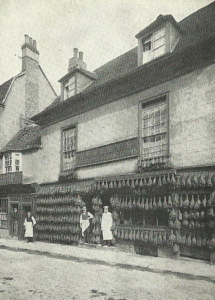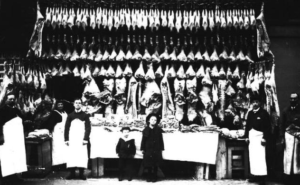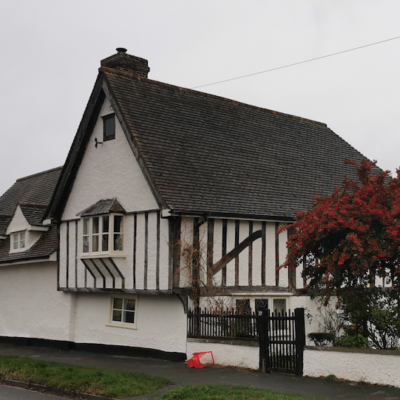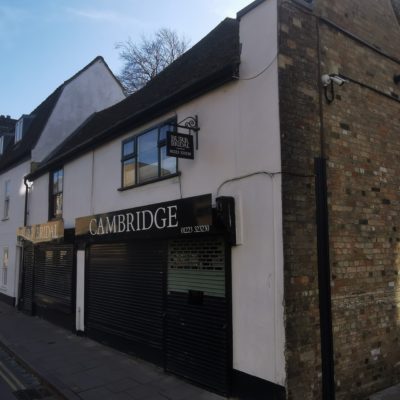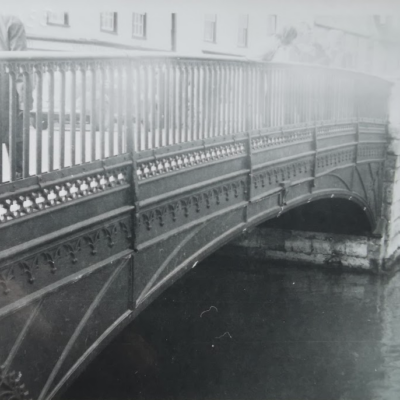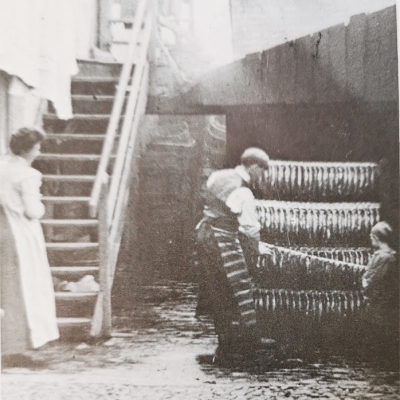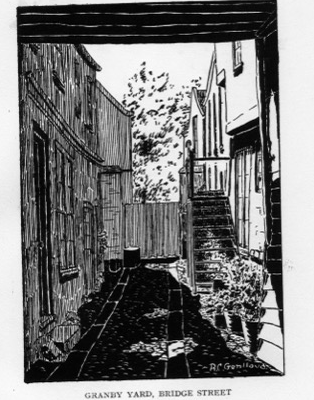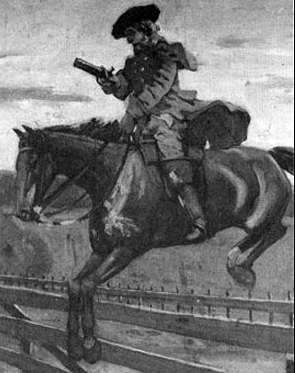Search by topic
- archaeology
- architecture
- bricklayer
- Building of Local Interest
- carpenter
- church
- crime
- dressmaker
- fire
- Great Eastern Railway
- listed building
- medieval
- oral history
- Public House
- Rattee & Kett
- Religious House
- Roman
- scholar
- school
- Then and Now
- tudor
- women
- work
- world war one
- world war two
Search by text
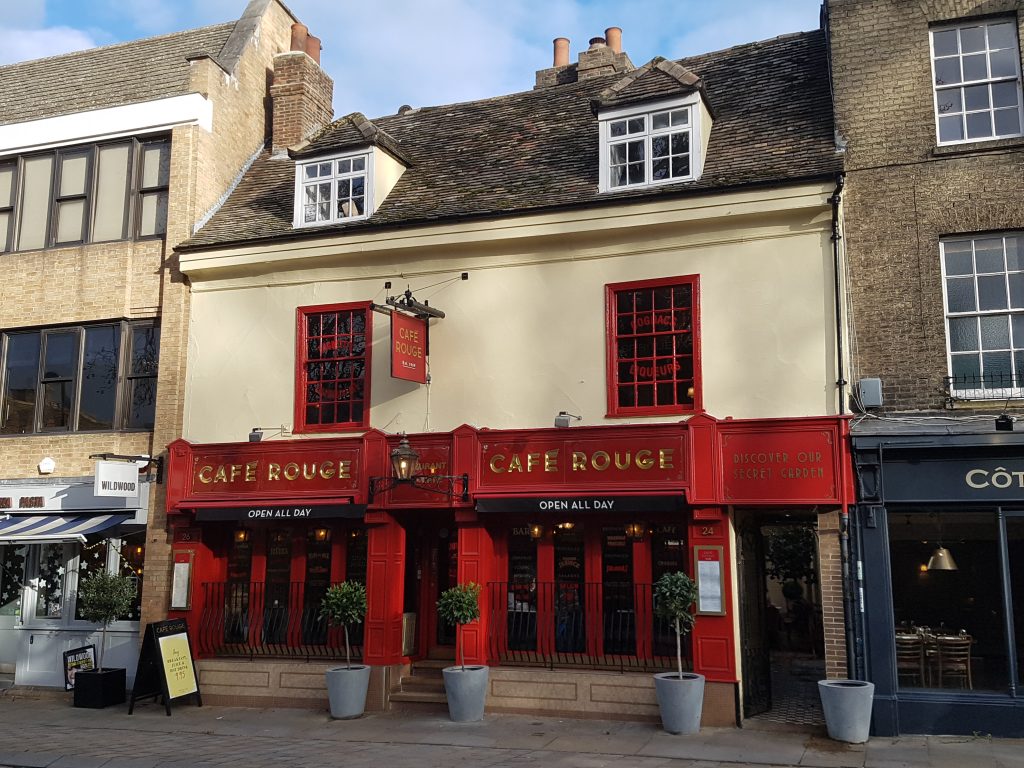
25 – 26 Bridge Street / The Barley Mow / the Bell / the Bunch of Grapes
History of 25-26 Bridge Street
1959 Royal Commission on Historical Monuments Survey of Cambridge: has walls of plastered timber-framing and tiled roof. It consists of a 16th cent. range to the street, with a 17th cent. NE wing. There are numerous original features inside.
Early history of the site from T E Faber, An Intimate History of St Clement’s, 2006.
1279 William de Pickering paid rent to Barnwell Priory of 3s plus a pound of cumin
1295 Richard de Parham acquires lease
1349 John de Parham [probably Richard’s grandson] granted his mother Amicia a tenement in St Clement’s which abutted onto the high road and which lay between the tenements of Geoffrey Seman.
1355 One of the two cottages granted to St John’s Hospital. Roger le Kobelere was the tenant.
1365 – 1371 Robert de Bury
1484/5 John Waryn
1490/91 John Waryn
1505 – 11 Laurence Rankyn who rebuilt the premises
1526/70 lease from St John’s College for 20s ‘ for a tenement in the tenure of William Rychardson, late William Gotte, lately let’ at 23s 6d.
1540 John Bell (II), weaver, paid rent to St John’s. Died 1553.
1586 lease to Harwood Cook. Contains condition that the tenant should rebuild ‘The Bell’ i.e. an inn.
Hearth Tax period: head lease held by John Lowry, fishmonger, or James Lowry of King’s Lynn, merchant. occupied by John Bullen, haberdasher.
1729-44 John Martin; he paid extra for a brandy licence in 1730 and 1731
1742-67 Elizabeth Martin for Bunch of Grapes in 1752
1768-69 John Ogram for Grapes
1770 not listed
1771-80 James, later Ann, Chiswick for Grapes
1776 John Gillam acquired head lease and therefore association with Thompson’s Lane brewery.
1781-98 Anne Chiswick for Barley Mow
1795 sold by St John’s as a single property. Bought by the sitting tenant John Purchas. Described as ‘ now divided into two tenements one whereof is now used as a public victualling house called the Barley Mow.’
1799-1856 Barley Mow listed continuously
1803 Richard Foster acquires ownership
1830 William Todd (Pigot’s)
1839 James Banham (Pigot’s Directory)
1841 (probably 25/26 Bridge Street. James Banham and Robert Royston were neighbours according to the census so possible lived in the same building)
Robert Royston, 45, milkman
Emma, 40
Martha, 15,
Robert, 12
John, 10
Edward, 8
Frederick, 4
Joseph, 1 month
Before 1841 Robert Royston was (1837) a shopkeeper and (1824-1832) shoemaker. For information about the Royston family see study by D Dashwood-Howard:
James Banham, 40, waterman
Mary, 35
Ann, 15
Suzannah, 9
Samuel, 6
Samuel Higdon, 60, labourer
Samuel Higdon, 30, labourer
Joseph Higdon, 15, labourer
James Hewitt, 40, labourer
William Day, 25, labourer
Edward Freeman, 50, musician
James Goodenough, 15, labourer
Charles Mickle, 35
1851
Robert Royston, 55, pork butcher milkman and victualler, b Cambridge
Emma, 50, b Wilts
Martha R, 27, b Bath
Joseph, 9, b Cambridge
1852 Robert Reynolds (Slaters)
1853 Robert Royston, pork butcher and beer retailer
1859 Mrs Royston, tenant, Thompsons Lane Brewery records (held at Cambridgeshire Archives). Property auctioned off with rest of Foster estate. It then consisted of a shop with shop window and a tap room, plus four bedrooms, stabling and a cow house with loft above. It was bought by Magdalene and shortly afterwards ceased to function as a pub.
1861
Emma Royston, widow, victualler, 59, b Wilts
Martha R Royston, daughter, 36, b Bath
Joseph Royston, son, lawyers clerk, 19, b Cambridge
Matilda Allan, servant, 28, b Cambridge
The Lost Pubs project online records that at some point in the 1860s the premises was Sebleys Tea Rooms and Ham Shop.
1871
Emma Royston, 69, pork butcher
Clara B Royston, 21, granddaughter, pork butcher
Ann Hodson, 21, servant, b Bourn
1874
Emma Royston died 27.6.1874 and family’s connection with 25/26 Bridge Street ended
1913
Herbert Sebley, eating house keeper
1962
W Stockbridge & Sons, antique dealers
1983
Magdalene College sold property
Contribute
Do you have any information about the people or places in this article? If so, then please let us know using the Contact page or by emailing capturingcambridge@
License
This work is licensed under CC BY-NC-SA 4.0








